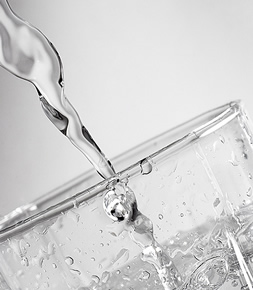Control through food intake


- Eat a lot of vegetables and fruits.
- High intake of vegetables and fruits reduces the percentage of sodium in our blood. Less sodium means lower risk of getting high blood pressure, which is one of the risk factors of stroke. Vegetables and fruits also are rich sources of antioxidant vitamins and minerals, which reduces the risk of getting stroke.
- Eat low-sodium food to reduce your blood pressure.
- Reduce the intake of food containing high cholesterol and polyunsaturated fat. This reduces the chances of getting artherosclerosis.
- Eat food with high omega 3 fatty acids. Do not exceed the intake of 3 grams of omega 3 fatty acids daily. Omega 3 fatty acids increase our HDL blood cholesterol and reduce the fats in our blood. This helps in reducing our blood pressure. Example of food rich in omega 3 fatty acids are whole grains, walnuts, salmons, sardines, olive oil and garlic.
- Reduce sugar intake to prevent diabetes mellitus, another risk factor of stroke.
Drink plentiful of plain water


- Do drink more than 8 cups of water a day.
- Do not consume alcohol. If you do, try to reduce it to 2-3 days of alcohol consumption days in a week. Large consumption of alcohol raises the blood pressure immediately, which will lead to stroke.
- Drink tea daily. Based on a report in 2009, researchers have found out that drinking black or green tea reduces the stroke risk by around 20 percent.
- Avoid the temptations of drinks with high sugar content.
Be more physically active


- Exercise for at least 30 minutes twice each week.
- Take the stairs instead of the elevator.
- Exercising reduces our blood cholesterol and blood pressure. it also improves the ability of your body to control the insulin. Exercise intensively to reduce body fat for those that are obese as obesity is one of the risk factors of stroke.
Stop smoking
- Quit smoking immediately if you are a smoker. Smoking causes artherosclerosis and increases the possibility of blood clotting.
- Try nicotine gum which is an antidepressant as one of the way to quit smoking.
Manage medical condition
- Blood pressure should be checked every year. For those who are already having high blood pressure, do check regularly.
- Check for atria fibrillation which is irregular electric pulse in the heart. This will causes blood clots that can lead to stroke.
- Check blood sugar daily for those that have diabetes mellitus. Consume medicine as told by the doctor.
- Cholesterol level should be maintained at less than 240 mg/dL, with LDL below 160 mg/dL and HDL above 40 mg/dL. However, people with the risk factors should maintain their cholesterol level at level below 200 mg/dL, with LDL below 100 mg/dL, and HDL above 60 mg/dL.
*If you are
experiencing any symptoms of stroke such as sudden weakening of limbs, sudden
dizziness, blurring of vision or sudden severe headache, seek for medical
assistance immediately.
References :
Medical reference from university of Maryland
Medical reference from university of Maryland
Natural Approaches to Stroke Prevention, By Cathy Wong, About.com Guide, Updated September 21, 2009
Stroke Prevention, From Marian Anne Eure, former About.com Guide, Updated August 21, 2005

2 comments:
Smoking kills lets not kill :)
what kind of exercise is suitable for heart diseases' patients ? is badminton suitable for them ?
Post a Comment